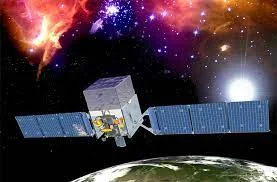Fermi

Studying the gamma-ray sources of the Universe (NASA)

The Fermi Gamma-ray Space Telescope is a NASA space observatory dedicated to the observation of high-energy gamma rays from a low-Earth orbit. Launched in 2008, the telescope's goal is to scan the entire sky to study high-energy astrophysical and cosmological phenomena such as active galactic nuclei, pulsars or other high-energy sources and dark matter.
The main instrument of the mission is the Large Area Telescope (LAT), which has an unprecedented sensitivity to gamma rays in the energy range from 20 MeV to 300 GeV. The telescope's Gamma-Ray Burst Monitor complements the LAT in its observations of transient sources and is sensitive to X-rays and gamma rays with energies between 8 keV and 40 MeV.
THE IEEC CONTRIBUTION
As members of the Fermi-LAT collaboration, the IEEC researchers involved in the mission have participated in the day-to-day running of the experiment, acting as internal reviewers of the scientific publications of the data, participating in committees/meetings of the collaboration or assisting in the elaboration of several NASA Senior Science Reviews. In addition, a couple of times a year, they act as Flare advocates and carry out daily checks (similar to an observing shift).
From a technical point of view, the Institute has contributed to the definition of the population of stellar objects to be simulated for data challenges and the development of algorithms for the identification of source classes. In addition, tasks on in-orbit calibration of the data as well as on the development of the instrument response were carried out. The Institute also participated in the technical validation of the time difference analysis for radio quiet pulsars.
